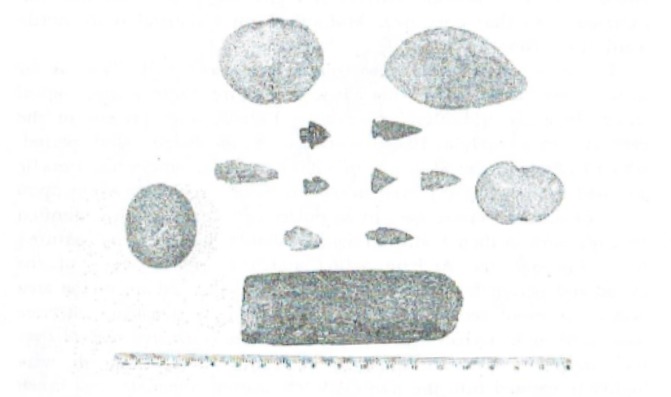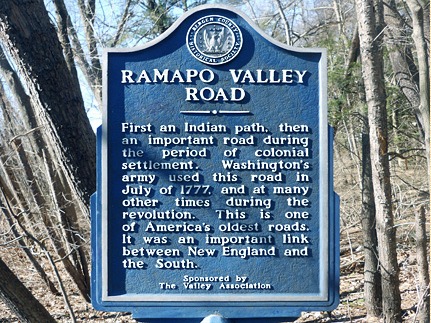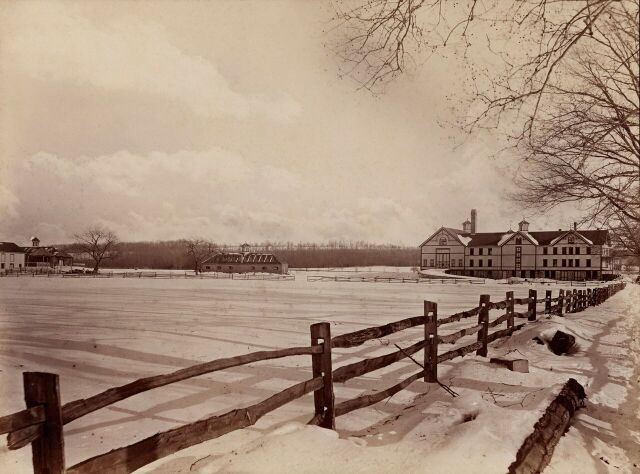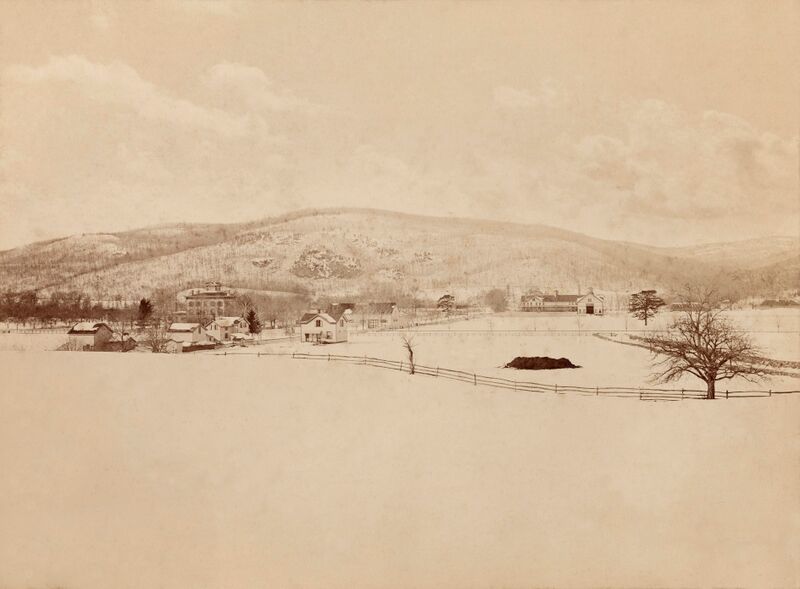Mountainside Farm: A Brief History

Native American Artifacts from Mahwah

Ramapo Valley Road Historical Marker

A View of the Barns from the Fence, 1890s

A View of Mountainside from the Valley, 1890s
The Early Days of Mahwah
In the development of Mountainside Farm, one can observe almost every major era in American history. Located on Ramapo Valley Road, the area is a treasure trove of eighteenth, nineteenth, and early twentieth century history. Even before European settlers began their lives in Mahwah, the town (including Ramapo Valley Road) served as a Native American trading route. In fact, the name of the town comes from the Native word mawiweh, which roughly translates to “meeting place.”
Revolutionary History
Later in the eighteenth century, Mahwah played a pivotal role in the American Revolution after having been settled by the Dutch. Ramapo Valley Road and the land which would later serve as the grounds of Mountainside Farm became increasingly important to the Continental Army, as they were a passage north towards Albany. In fact, at one point the army even encamped upon the actual Mountainside Farm property, and General George Washington himself stayed with the owner of the land at the time, Andrew Hopper. Washington used Hopper’s home as a base several times during the Revolution, and a portion of the house is now preserved “in the south wing of Mr. (Theodore) Havemeyer’s modern mansion.”
After the Revolution
Theodore Havemeyer’s purchase of the Mountainside Farm property would prove to be instrumental in the development of Mahwah. Taken from afar, this dramatic view of the valley in which the farm was situated does some justice to the sheer size of the operation. One correctly gets the sense that big business was beginning to trickle down from New York City into the rural town of Mahwah, which would later become a large part of its identity. Havemeyer’s farm was the one of the first of these types of businesses, and it was so successful that it quickly gained national acclaim. Visitors were many and frequent, whether they be locals interested in seeing the cattle herd and luxurious barns (see "A View of the Barns from the Fence") or journalists who traveled vast distances for a tour of the famous farm.
National Recognition
Throughout the late nineteenth and early twentieth century, countless articles were written about Mountainside Farm by its visitors, many of which spoke very highly of it. One particular article, published on March 6th, 1884 in the Rocky Mountain Husbandman stated that “the place is under a very high state of cultivation, and is supplied with every convenience that the ingenuity of man can furnish.” This language is not what one would expect of someone reviewing a farm, but at Mountainside Farm, it was quite typical. The superintendent of the farm, John Mayer, was usually the one responsible for showing such people around Mountainside, as he was often mentioned in the articles that follow; the Rocky Mountain Husbandman article went so far as to describe him as “gentlemanly.” Another article, published in 1883 in The Atlanta Constitution, stated that the farm’s acres “number about six hundred, of which more than half are arable and are cultivated in the most thorough manner, under the superintendence of Mr. John Mayer, a thoroughly practical, educated, and scientific farmer.” Again, the language used seems unusual, but Mahwah’s Mountainside Farm was unique in this aspect. Based on the image above ("A View of Mountainside from the Valley"), one gets a good sense of how the farm was laid out as well. On the left, it is easy to pick out the Havemeyer House, which would seem to be the tallest building pictured. The structure is still standing today, and serves as a good comparison to the other buildings. On the right and farther back, the cow barns stand out fairly well.